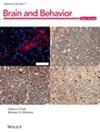Risk Warning of Neutrophil-to-Lymphocyte Ratio for Neurological Recovery in Acute Ischemic Stroke After Thrombolysis: A Retrospective Study
Abstract
Background
To investigate the relationship between dynamic changes in the neutrophil-to-lymphocyte ratio (NLR) and neurological recovery in noninfected patients with acute cerebral infarction after thrombolysis.
Methods
A retrospective analysis was conducted on 277 patients with stroke thrombolysis. Least absolute shrinkage and selection operator (LASSO) regression was used to identify factors influencing recovery, and 1:1 propensity matching was performed between the groups to compare the changes in the National Institutes of Health Stroke Scale (NIHSS) score, muscle strength, and NLR after treatment. The receiver operating characteristic (ROC) curve was used to determine the cutoff value of NLR reduction after treatment, which serves as a diagnostic criterion for neurologic recovery. The posttreatment NLR reduction values were categorized according to whether they were equal to and greater than the cutoff value. Logistic regression was performed after intergroup matching to analyze the relationship between NLR and NIHSS.
Results
The LASSO regression suggests that increased disease duration and atrial fibrillation are risk factors for neurologic recovery, whereas prolonged treatment duration and increased NLR reduction value are protective factors. Compared with the low-efficacy group, the high-efficacy group exhibited significantly lower NIHSS scores, NLR, and upper and lower extremity muscle strength scores after treatment (p < 0.05). The NLR reduction value was positively correlated with the NIHSS score reduction value and the change in the NIHSS score reduction rate (p < 0.001). The ROC curve and logistic regression indicated that patients with an NLR reduction value of ≥ 0.335 had good recovery.
Conclusions
Higher NLR reduction values indicate an improved neurologic prognosis after treatment.
Trial registration
Clinical Retrospectively Registered Trials: ChiCTR2100045415


 求助内容:
求助内容: 应助结果提醒方式:
应助结果提醒方式:


